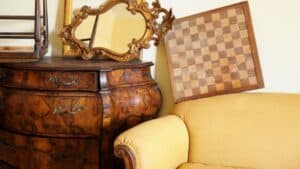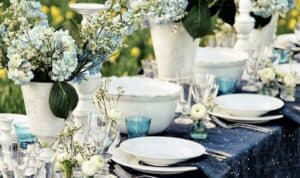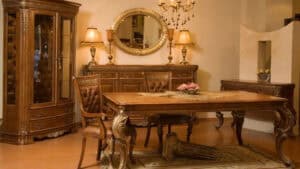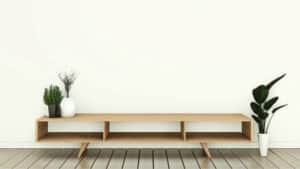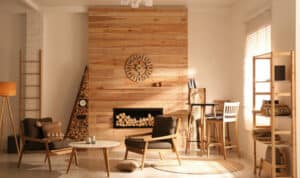Victoria Wormsley has fifteen years of experience in interior design and is the founder of residential design practice French-Brooks Interiors. Her design philosophy is simple: to suit the work to the architecture and the individual. She has worked on a large variety of projects, from listed country properties to a Belgravia Pied à Terre and even a former monastery in the South of France. Here she shares invaluable insights on how to use art in interiors to best affect our designer Q&A with our Editor-in-Chief Kerryn Harper-Cuss.
Why is art so important to include in an interior? What does it add?
Art adds soul to a room – even the most stunning interior can give an impression of emptiness without it. Art is innately subjective and brings a sense of personality, it enlivens the space. For example, the doorway from the hall below shows a majestic stone head sculpture by Emily Young, which makes a strong focal point and draws you through the corridor.
At what point in the process do you add art? Presumably, some clients have collections to work around whilst others might ask you to source pieces for them? Absolutely, it’s usually a combination of the two. Most people have collected something on their journey through life so I usually help them work out what they would like to include and how to display it within the interior design as a whole.
Some clients have quite specific collections which require careful consideration, for instance, glass which benefits from being backlit and small items that need to be displayed so the detail can be seen close-up. Others need help finding art that they love and which sits well in the interiors we’re working on together.
This tranquil bedroom (below) shows a 1970s Curtis Jeré metal wall sculpture, sourced from Milos Antiques, above the bed which I put forward as I knew the clients loved their work. It adds a reflective, leafy element to an otherwise soft muted scheme.
Does the genre/choice of media and subject matter of a piece of art inspire or dictate a scheme or indeed limit it?
There are no hard and fast rules about combining art with interior decoration. Whilst in the past people may have felt that a room’s architecture, decoration and art needed to be of the same period, now most clients are open to a more eclectic approach, mixing up different periods and styles. However, colour, scale and proportion are still important considerations: whilst art that “matches” the decorative scheme would be horribly trite, the colours need to sit comfortably together.
If the colours are harmonious and the art is a good size in relation to the scale of the room and the proportions of the furniture, pieces from very different eras and places can be combined successfully. For example, in this Dining Room in a Regency house with period detailing (below), I juxtaposed traditional curtains and antique furniture with contemporary painting and a mid-20thcentury Brazilian sculpture. However, the painting’s colours pick up on the colours in the curtains, its frame tones with the ebonised chest and the sculpture is a good size for the height of the chest and connects with other more traditional brass elements in the room.


